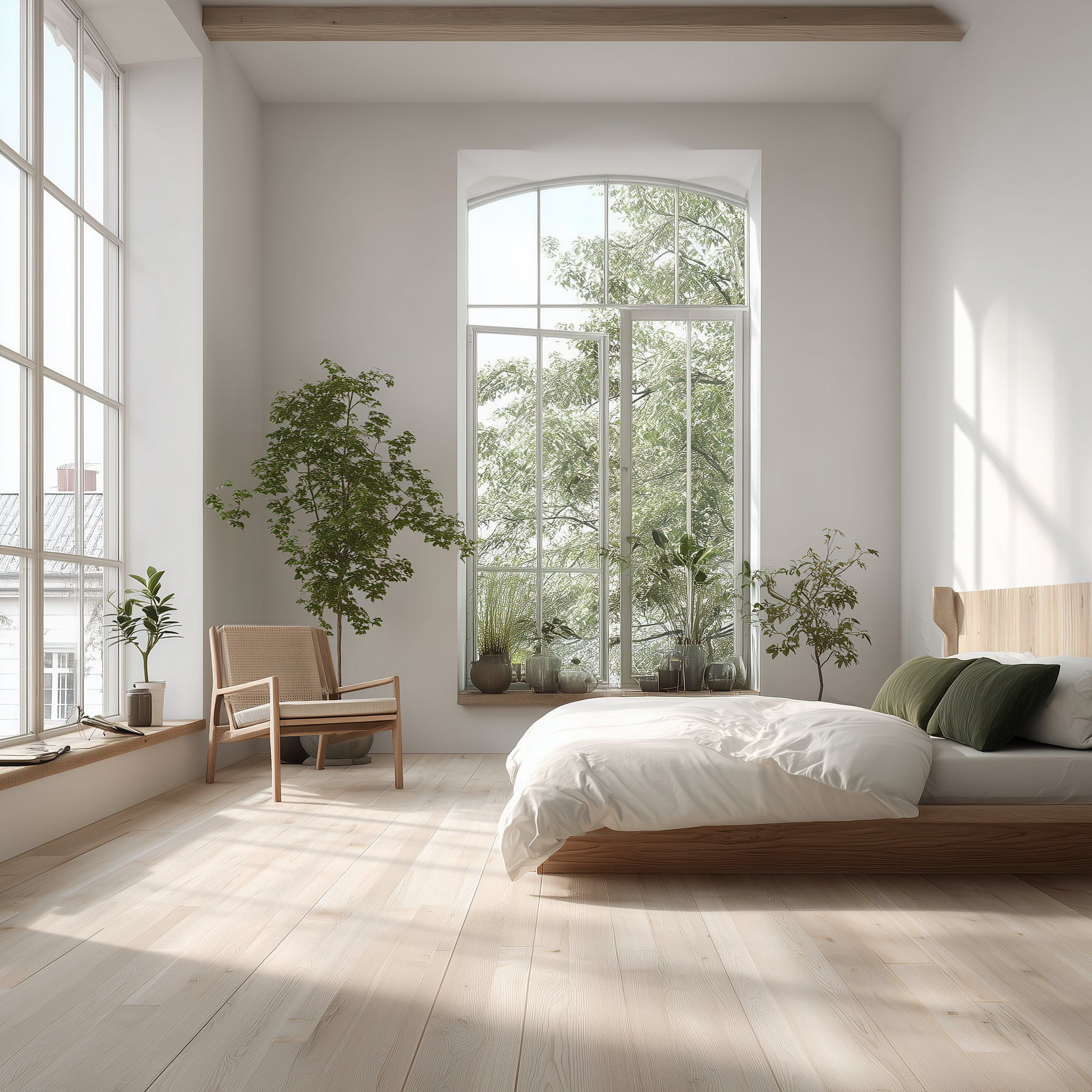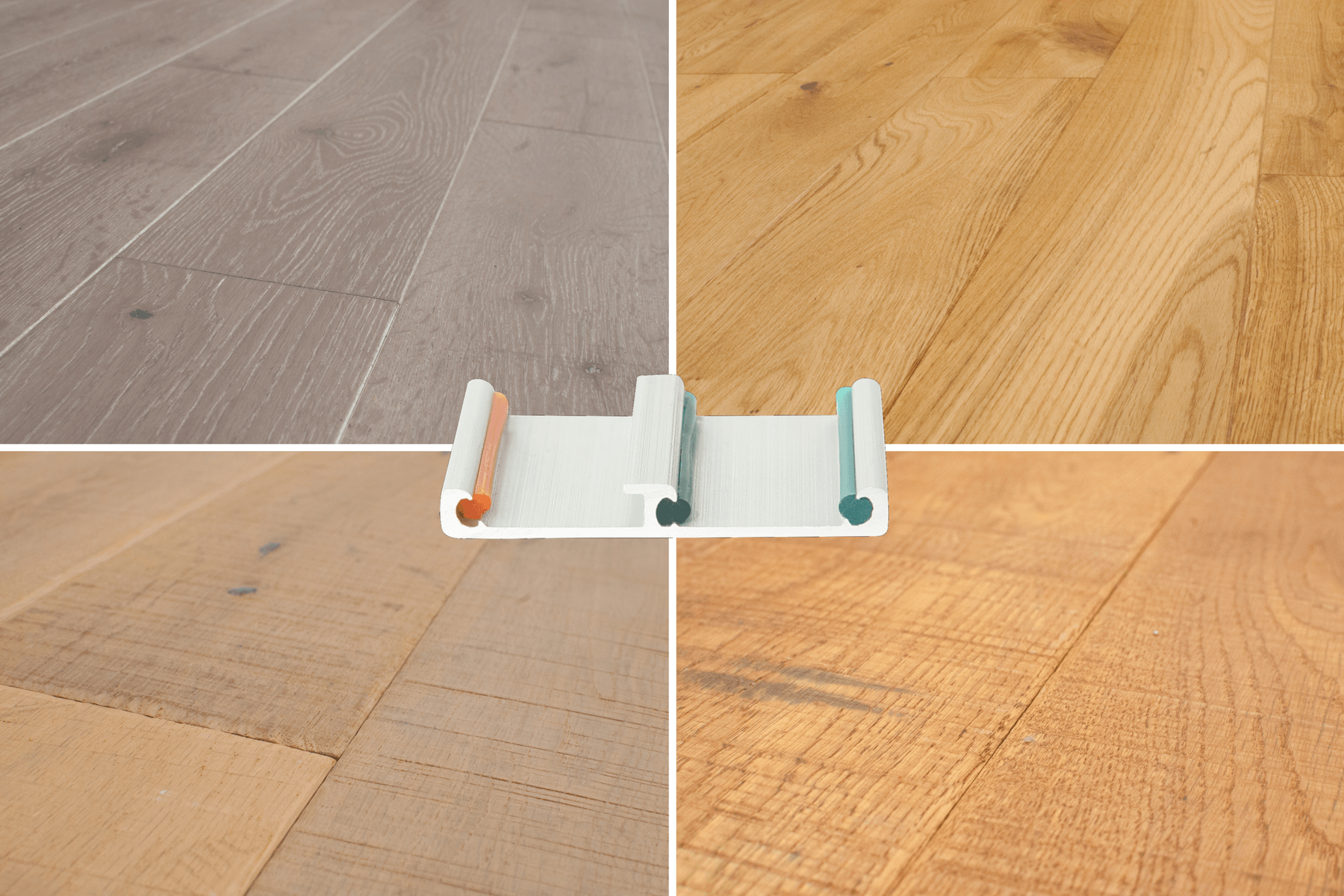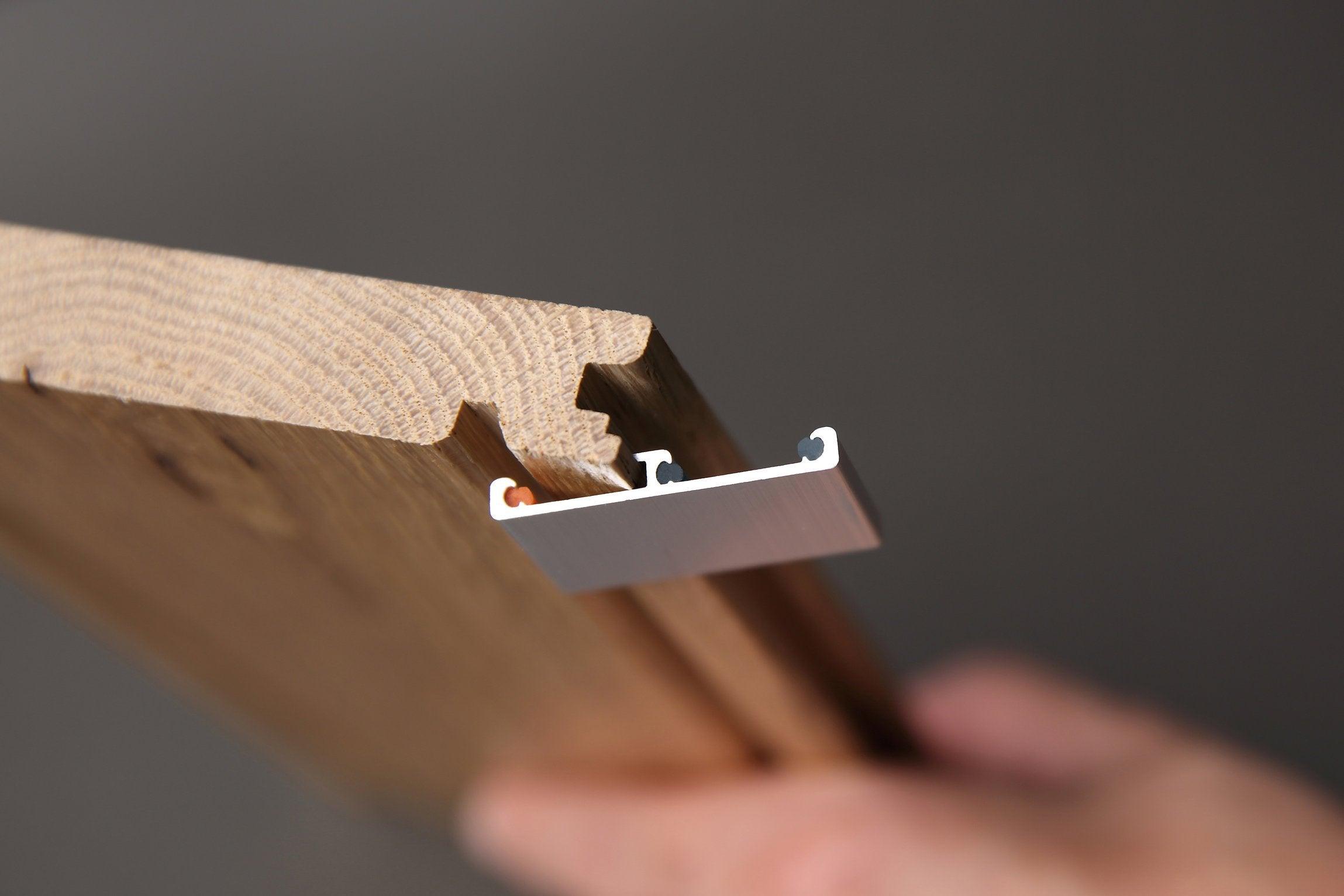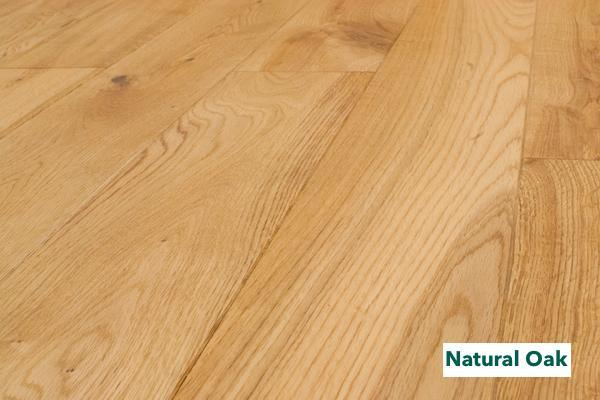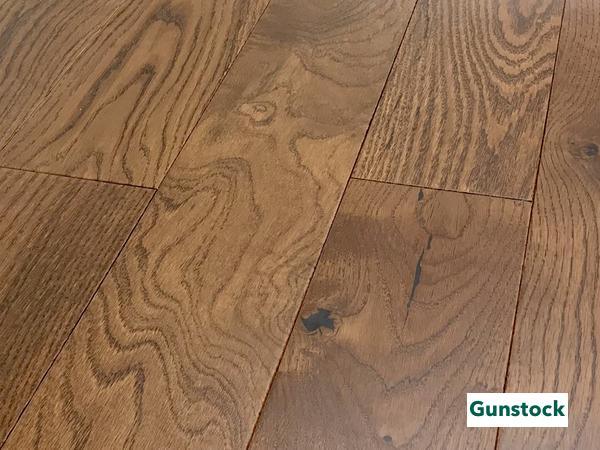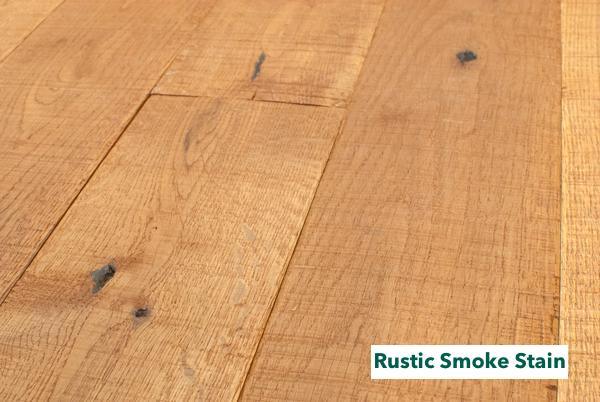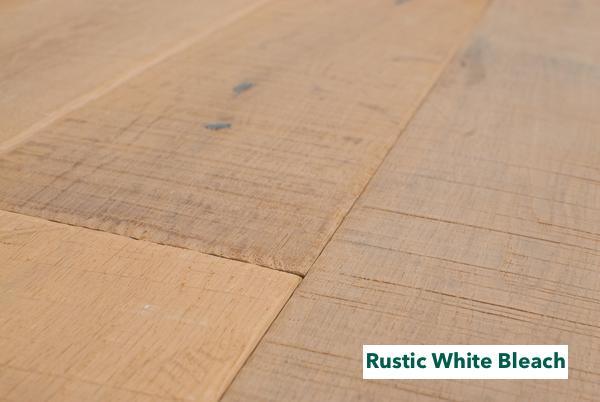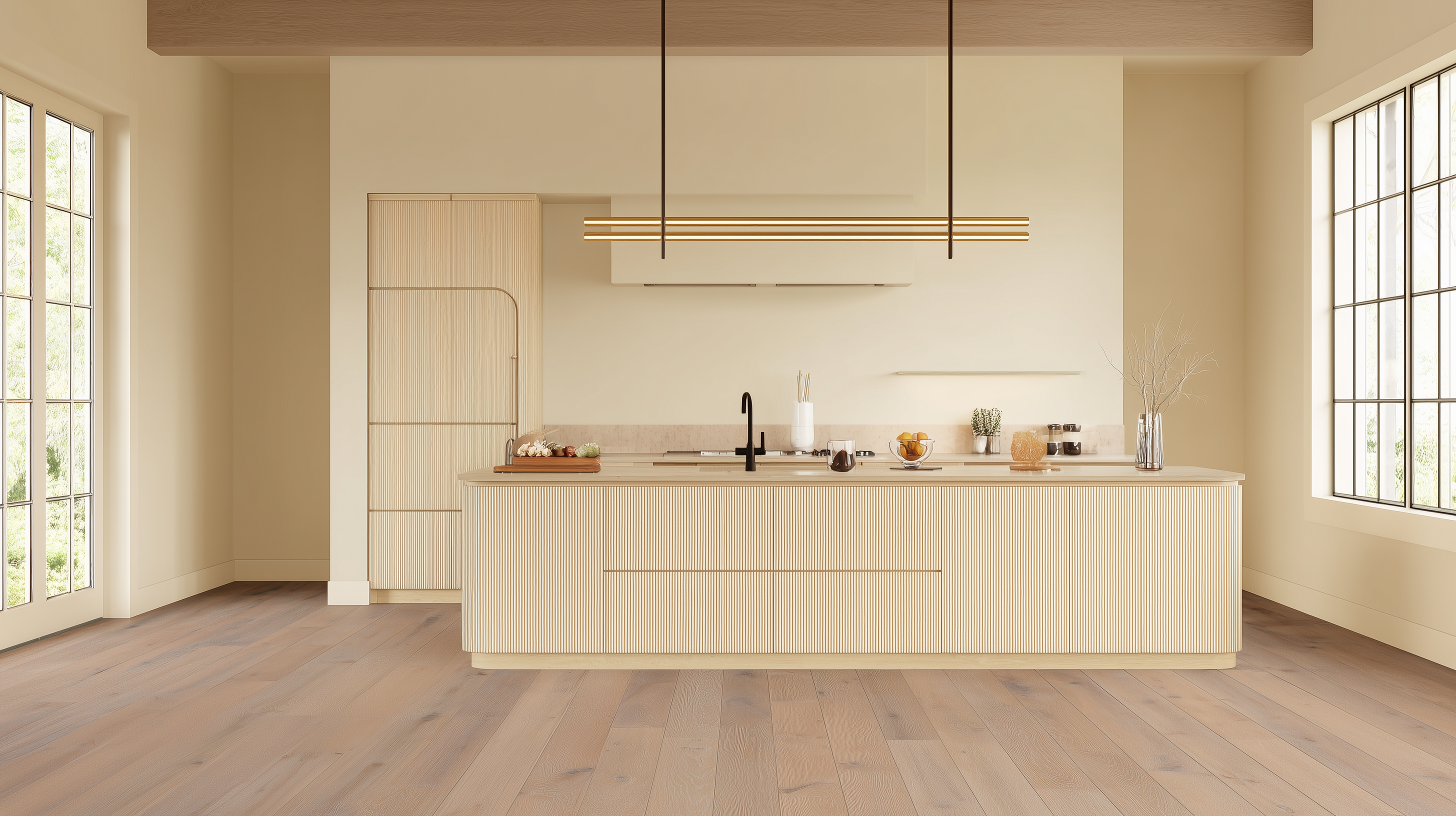When selecting a hardwood floor, it’s often the subtle details that define the final look, and none are more influential than the hardwood floor edge profiles. The transition between planks may seem minor, yet it shapes how light travels across a room and how the floor feels beneath your feet. A square edge creates a smooth, continuous surface, while a beveled edge introduces shadow and texture that highlight the individuality of each board. Understanding these profiles helps you choose a floor that not only performs beautifully but also reflects your home’s character and style.
Why Edges Matter
Creating a perfect 90° edge on wood is challenging, even for machines. The tolerances of the milling machines can vary, creating very slight differences between boards. These variations could become noticeable after installation. To reduce these differences, they shave down or bevel the sharp edges of the board. It creates more uniformity and reduces the possibility of damage to the edge of the boards during handling. Beveled edges also allow for slight imperfections of the subfloor to go unnoticed.
For factory-finished wood floors, the micro-bevel has become the standard side profile for most prefinished boards. While some homeowners and designers prefer the smooth look of a square edge floor, it’s more challenging to achieve the intended results. Square edges on prefinished wood can easily get chipped or dented during transport or installation.
A square-edged, factory-finished floor requires an almost perfect job site and sub-floor conditions. Square edges need the utmost skill and care to install. If each edge is not the exact same height as its neighbor, the raised edge creates a tripping hazard and doesn’t look right.
That doesn’t mean flat floors with square edges are impossible. Here are some suggestions to help improve the installation success of a square edge factory-finished floor:
- The subfloor must be flat as glass to assure the alignment of the boards. The installation requires a variation of less than 3/16” for every 10 feet of floor or less than 1/8” in a 6-foot radius.
- If nailing, avoid the exposed square edges. The nails must be set evenly, or they could pull sections of board lower than others.
- Boards naturally change the size and shape slightly due to weather and humidity. This slight movement is more noticeable in a square-edged board than one with a beveled edge.
Beveled Edge Floors: Subtle Definition
As with any choice, you need to weigh the pros and cons before you decide which type of floor is best for you.
Pros of Beveled Edges
- The beveling can be small, such as a micro bevel
- It minimizes the conspicuousness of any misalignment
- It allows for normal subfloor variances
Cons of Beveled Edges
- The grooves can collect dust and grit
- There are slight lines visible down the length of the boards
Most modern flooring takes advantage of the durability and flexibility that beveled edges provide.
Historically, square edges ruled the floor world until the advent of mass production and milling machines. Until then, craftsmen hand-finished floors to make them flat, smooth, and seamless. It’s still a fashionable look for modern homes as well as antique restorations.
Let’s take a look at the different hardwood floor edge profiles typically used by hardwood flooring manufacturers, starting with the square edge.
Square Edge Floors: Seamless Precision
If the look you want is one smooth surface like a basketball court or bowling alley, the boards need a square edge. The floor surface blends seamlessly from one board to another. Every edge has a 90° angle and fits snugly together on the sides and the ends. Many laminate floors offer this style because the wood veneer is glued to a substrate, making the edge more durable than a single piece of wood.
Square edge wood floors tend to be more expensive because the edges are fragile and can get damaged during shipping and installation. It needs custom sanding and finishing on site. It’s not the best choice for a DIY project unless you have experience.
Correctly installed and finished, square edges create a seamless, mirror-smooth floor. Here are the benefits and disadvantages of installing a floor with square-edged boards.
Pros of Square Edges
- It’s best for an onsite finishing
- Easier to match existing flooring of historic buildings
- Avoids the slight line between boards
Cons of Square Edges
- Subfloor must be extremely flat
- More skill required to nail precisely and with even pressure
- Even minor imperfections can cause a visual or physical problem
- Seasonal fluctuation in the wood can cause noticeable unevenness
Square edge floors add formality to any room.
Beveled Edge
Placing two floorboards together with beveled edges creates a V-shaped groove. It’s the most common type of floor because it requires less precision to install it. Beveled edged floors are the best choice for DIYers if it is their first time. Beveling helps hide subfloor imperfections and reduces the chances of edge splinters.
Some say that the groove can collect dust; however, with regular vacuuming, it’s not an issue. Plus, the grooves allow dirt and grit to gather away from the surface, protecting the finish longer.
While some people may find the groove a distraction, most people don’t even notice it as it is part of the natural look of a beautiful wood floor. You’ll find these floors suitable for every home.
Here are a few types of bevel edges you’ll find when you’re out pricing flooring.
Micro-Beveled Edge
A micro-bevel, as the name implies, has a small 45° cut into the edge. It is shallower than a regular beveled edge but still has the advantage of beveling. Some other terms for this edge that you may see are “eased,” “kissed,” or “micro-V.”
Although the groove is shallower, it helps hide any irregularities like uneven board heights or subfloor imperfections. The lines are more subtle and provide a modern look for contemporary designs.
It’s one of the most common edges that manufacturers offer. It’s less noticeable and closest in appearance to a square edge. This edge works in any decor, room, or style.

Two more edge types that you might come across are micron and pillow.
Micron-Beveled Edge
A micron-edge is even more shallow than a micro-edge. Depending on the manufacturer, you may not notice a difference between micro or micron-bevel edge. You’ll find micron bevels more with Canadian manufacturers than U.S. flooring brands. Typically, Canadian manufacturers opt for quality over quantity. They use slower and more careful milling operations than their American counterparts. U.S. manufacturers tend to mass-produce hardwoods resulting in notably uneven vertical height differences. A uniform micron-edge requires boards with tiny variances.
The micron-edge is a subtle way to distinguish the individual boards. It’s a trade-off for someone who wants the look of a smooth surface but doesn’t want to go through the custom sand and finish process in their home.
Pillow-edge
Whereas a traditional beveled edge has a distinctive 45° angle, pillow-edged floors have a gentle rounding down from the surface of the floor into the bevel. Scraping creates this soft, rounded look, like the side of a pillow. It’s more common for wider planks where an angular “V” bevel looks out of place and machine-made. The rounded “V” of the pillow-edge creates a softer, casual look.
 To have another perspective on the different styles of edges and some images, check out this “hardwood floor edge profiles” video. For another example, this 2-minute video, Which floor edging is best for me? will answer any questions you have about the different edges.
To have another perspective on the different styles of edges and some images, check out this “hardwood floor edge profiles” video. For another example, this 2-minute video, Which floor edging is best for me? will answer any questions you have about the different edges.
A Subtle Choice with Lasting Impact
Hardwood floor edges may seem like a small design decision, but they carry influence far beyond installation. The edge profile changes how your floor interacts with light, how it feels underfoot, and even how forgiving it is to seasonal changes and subfloor imperfections. A square edge brings formal polish, while a beveled edge highlights each plank’s individuality. The right choice depends on your space, your lifestyle, and your tolerance for maintenance. In either case, attention to this detail ensures your floor feels intentional, not incidental.
Bring Natural Elegance Home
Hardwood floor edge profiles are a quiet but powerful part of floor design. Whether you love the seamless precision of a square edge or the soft definition of a micro-bevel, these choices change how your space feels—from the way light dances across the grain to how easily your floor hides everyday wear.
For a floor that blends beauty and practicality, explore Easiklip’s collection of prefinished solid oak hardwoods. Each plank features a refined micro-bevel for natural definition and installs using a patented clip system—no glue, no nails, no stress. The result: flawless alignment, easy installation, and enduring warmth underfoot.
👉 Order your free sample today: https://easiklip.com/collections/diy-hardwood-floor-store
Bring timeless design home—one edge at a time.
